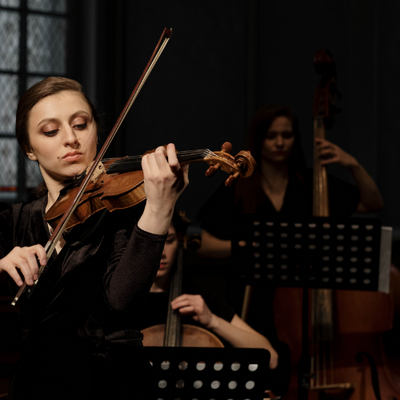The violin is an instrument of extraordinary versatility, capable of expressing an impressive range of emotions and musical styles. While it is often associated with the grandeur of classical music, its adaptability has allowed it to thrive across various genres, from folk traditions to modern experimental sounds. This rich diversity invites violinists and music enthusiasts alike to explore the unique nuances of both classical and contemporary violin music.
The Timeless Allure of Classical Violin Music

Classical music is where the violin has truly flourished, with centuries of composers pushing the instrument’s expressive boundaries. Works by composers like Johann Sebastian Bach, Antonio Vivaldi, and Ludwig van Beethoven form the foundation of the classical violin repertoire, showcasing the instrument’s ability to convey profound emotional depth.
The structure of classical music often emphasises technical precision and melodic beauty. Concertos, sonatas, and orchestral works challenge violinists to achieve both technical mastery and interpretative nuance. For students and professionals alike, immersing oneself in this genre provides an essential grounding in technique and musicality.
Moreover, classical music celebrates the violin’s natural tone, with many pieces written specifically to highlight its resonance and range. Whether performed solo, as part of a string quartet, or within a full orchestra, classical music is an enduring cornerstone of violin playing.
Folk and Traditional Music: The Violin’s Cultural Legacy
 The violin, or fiddle as it is often known in folk traditions, has long played a central role in the music of various cultures. From Irish jigs to Eastern European dances, the violin bridges cultural stories and communal celebrations. Its portability and expressive potential have made it a favourite for conveying regional melodies and rhythms.
The violin, or fiddle as it is often known in folk traditions, has long played a central role in the music of various cultures. From Irish jigs to Eastern European dances, the violin bridges cultural stories and communal celebrations. Its portability and expressive potential have made it a favourite for conveying regional melodies and rhythms.
Exploring folk music can be particularly enriching for violin students, as it provides an opportunity to develop skills such as improvisation and rhythmic versatility. Learning to play folk pieces encourages players to embrace a more fluid and spontaneous approach to music-making, often involving techniques not typically encountered in classical training.
Contemporary Violin Music: Redefining Boundaries
 In recent decades, the violin has ventured boldly into contemporary genres, proving itself an integral part of modern music. From rock bands and jazz ensembles to electronic and film music, the violin is no longer confined to traditional settings.
In recent decades, the violin has ventured boldly into contemporary genres, proving itself an integral part of modern music. From rock bands and jazz ensembles to electronic and film music, the violin is no longer confined to traditional settings.
Contemporary violin music often incorporates unconventional techniques, such as chopping (a rhythmic bowing technique) and amplification, to create new textures and sounds. Artists like Lindsey Stirling and David Garrett have popularised a fusion of classical and contemporary styles, blending virtuosic playing with genres like electronic dance music and rock.
The comparison between classical and modern violin music highlights both the timelessness of traditional repertoire and the innovation of contemporary approaches. While classical music showcases the violin’s ability to sustain lyrical lines and intricate harmonies, contemporary music explores its adaptability, pushing the instrument to produce sounds that resonate with today’s audiences.
Encouraging Exploration Across Genres
For music students, exploring different violin music genres can be a transformative experience. While classical music provides a technical foundation and a deep connection to the instrument’s history, venturing into contemporary or folk styles can inspire creativity and broaden musical horizons.
For schools with music departments, incorporating diverse genres into curricula can enhance students’ engagement and appreciation of the violin. From teaching classical techniques to experimenting with modern styles, educators can encourage students to embrace the violin’s full potential.
Whether you’re a seasoned player or just starting your journey, exploring the violin’s role across genres is an enriching way to deepen your understanding of music. Each genre offers unique challenges and rewards, reminding us of the violin’s unparalleled ability to connect tradition with innovation.
Explore our range of violins, from beginner-friendly options to exquisite collector pieces.





















